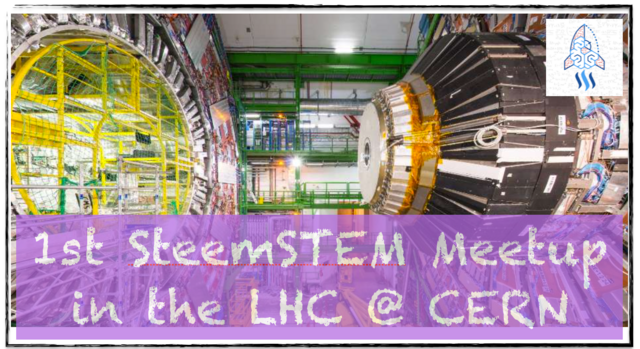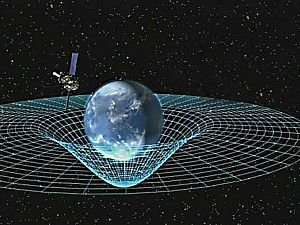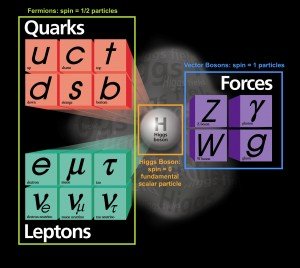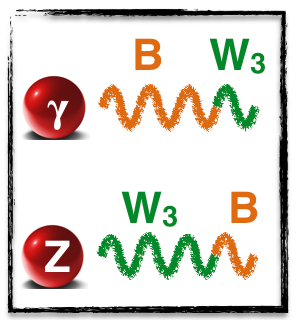A crash course on particle physics to get prepared for the steemSTEM meetup at CERN - 2 - interactions and symmetries
The first steemSTEM meetup is approaching, and it is now time to continue my crash course on particle physics (so that everyone could be nicely prepared). Before starting, I am happy to say that I got a final confirmation from CMS for a visit by 20 people. We are 19 confirmed participants for the moment, and there is hence still one free slot. One more person may thus have the chance to see the CMS detector at CERN, in the region of Geneva in Switzerland.
The CMS acronym stands for a Compact Muon Solenoid. I already discussed the ‘C’ earlier. What about the ’S’ this time?
A solenoid is a type of magnet that is used for generating a controlled magnetic field. The specificity of CMS is that the generated field is of about 4 Tesla, which is 100.000 times the magnetic field of Earth. But please do not worry, the machine will be shutdown at the time of the visit! This field is used to bend the trajectory of the particles going through the detector, in order to allow for their identification.

The current list of participants is @alexs1320, @ana.luiza, @aurel.proorocu, @bendelgreco, @ceybiicien, @dber, @fredrikaa, @grandpere, @howo, @justtryme90 (+1 guest), @kerriknox (+1 guest), @lemouth, @reggaemuffin, @saunter, @scienceangel, @suesa, @tristan-muller.
To all of you, please contact me on the steemit chat or on discord. I need to know your date and place of arrival/departure, if you are interested in sharing the rental of a minibus, if you have already settled lodging, if you have a car (and how many free seats in it) and if you are interested in a dinner together on the 8th in the evening. Thanks in advance!
Now time to go back to physics.
As I said in my previous post, I started to explain what particle physics was and I focused on the structure of matter. Now, it is time to describe the interactions in the fundamental world.
Once again, the slides that I will present at the meetup are available here. Thanks to @howo for having spotted a typo by the way.
THE 3+1 FUNDAMENTAL INTERACTIONS
At the macroscopic scale (i.e. at our level), we have a lot of different interactions that are traditionally called forces. However, for what concern the elementary particles, the situation is much simpler: we have only three plus one fundamental interactions: electromagnetism, gravity and the weak and strong interactions.

[image credits: Wikipedia]
Why ‘3+1’ and not ‘4’? Because in fact, gravity does not play any role. Gravity is much weaker than all the other interactions, at least at the energy scale probed in current experiments.
This statement may sound weird, but the strength of an interaction is not constant with the energy (thanks to quantum mechanics).
Making the calculations, one can find that gravity plays a role at the Planck scale. However, we are extremely far from there, by many orders of magnitude. Gravity can thus be ignored, in particular for the Standard Model, although other complications arise when one tries to incorporate it in there.
As gravity is not part of the Standard Model, this also tells us the the Standard Model breaks down at the Planck scale.
So for now, let us focus on the three other interactions.
INTERACTIONS AND SYMMETRIES
In the Standard Model, the three fundamental interactions are bound to the concept of gauge symmetries. I will not enter (too much) into the details, but in short, we impose the Standard Model to respect some symmetries. This enforces us to modify slightly the way particles propagate, and those modifications are nothing else that adding the fundamental interactions to the theory.
The fundamental interactions are thus derived from symmetry principles. This may sound artificial, but it works! The Standard Model predictions (based on gauge symmetries) have been tested in several thousands of different measurements during more than 40 years. There is up to now (almost) not a single sign of any deviation.
Gauge symmetries are hence suitable for explaining almost all particle physics data available today.

[image credits: homemade]
In practice, an interaction between two elementary particles is seen as an exchange of a gauge boson, as illustrated on the figure on the right.
Here, the ball stands for my boson, and the two characters throw it to each other. One says they interact.

[image credits: Fermilab]
The particle content of the Standard Model includes thus three sets of gauge bosons, one for each of the fundamental interaction (see the purple block of the figure).
This correspondingly implies that there are three independent gauge symmetries.
More in details, the photon is the mediator of electromagnetism. The W-boson and Z-boson mediate the weak interactions. Gluons mediate the strong interactions.
Taking the example of electromagnetism, an electromagnetic interaction at the fundamental level will hence be seen as a photon exchange. Moreover, it is good to recall that the photon is massless and that all charged particles interact electromagnetically.
While the photon is massless, weak interactions proceed with the exchange of massive weak bosons. Moreover, all matter particles are sensitive to them.
Finally, strong interactions are mediated by massless gluons, at the fundamental level, and those fundamental interactions are also responsible for the binding of protons and neutrons into the atomic nuclei through residual effects.
INTRODUCING THE HYPERCHARGE
The story looks so far simple, but it is actually slightly more complicated because of the weak interactions.
Taking the gauge symmetries, we naturally obtain a neutral weak Z-boson with properties disagreeing from those observed in data. Moreover, gauge symmetries forbid the weak bosons to be massive, again in disagreement with what is observed in data.
On the other hand, gauge symmetries cannot be wrong, as we have an amazing agreement with data (except those little details). So we want to keep them.
The issue on the nature of the Z-boson was solved by assuming that the fundamental interactions where the strong, weak and hypercharge interaction. No more electromagnetism…

[image credits: homemade]
But we can recover it kind of easily by an ad-hoc manner. We begin with considering the neutral weak boson that we denote by W3 (this is not the Z-boson anymore as data tells us it does not match its properties), and the hypercharge boson that we denote by B.
Next, we mix them into two new bosons that will each have some weak and some hypercharge component.
This is illustrated on the figure in the right.
The fun fact is that by fixing the amount of mixing appropriately, we end up with one boson being exactly the Z-boson observed in data, and another boson being exactly the photon observed from data (once the hypercharge of the different elementary fermions are fixed appropriately).
For this reason, the weak and electromagnetism interactions are unified in the so-called formalism of the electroweak interactions.
AND THE HIGGS BOSON?
The gauge symmetries impose that all gauge bosons are massless. The mixing introduced above cannot solve that issue. We must thus design a way to fix this, without completely killing the principle of gauge symmetries (because it works extremely well).
There is such a way, and it is called spontaneous symmetry breaking. The spontaneous breaking of the electroweak symmetry into electromagnetism not only yields masses for the gauge bosons, but also predicts the mixing of the B and W3 bosons into the Z-boson and the photon as described above. Furthermore, it also leads to the existence of the Higgs boson. But this will be for the next post.
In this article, I detailed how the fundamental interactions are implemented in the Standard Model of particle physics. This relies on the concept of gauge symmetries and on bosons mediating the fundamental interactions. I briefly discussed what are the electroweak interactions, and sketched why the electroweak symmetry has to be broken.
The slides associated both with the previous post and with this one are available here. More information can also be found in particular in this tetbook (which I would use for introducing particle physics to bachelor students).
SteemSTEM
SteemSTEM is a community-driven project that now runs on Steemit for more than a year. We seek to build a community of science lovers on Steemit and to promote well written/informative Science Technology Engineering and Mathematics (STEM) postings in order to make Steemit a place for fascinating STEM content.
More information can be found on the @steemstem blog and on the Steemit chat and in our last project report.
Looking forward to hearing about the meetup. Great idea giving everyone a primer on the material so they have a greater appreciation for CERN.
Yeah, this is the idea. It is easier to get prepared and have questions in advance :)
Finally able to download the slide on the google drive. The pictures make it easy to understand the basis of particle physics and would be a great introduction/ crash course for it. I can't wait to see you guys at CERN. Here is when I wish teleportation is real :)
Hehe no teleportation for the moment. You will have to live with the future pictures and the slides :D
I can live with that since pictures are still worth a thousand words :)
Fairly interesting, pretty sure I haven't understood all of that haha :D
Then you may need to read it again? :D
Will try again, particle physics is something that I can't usually manage to wrap my head around.
Thanks for trying. Please let me know if you have questions.
Interesting that the very common massless photon is really a composite of a hypercharge boson (B) and a neutral weak boson (W3). Is that right?
Question: If we have an electron and another charged particle approaching that could be an electron or a positron, the 2 particles will exchange photons. These photons need to carry the information of the charge of their source particles resulting in an attraction or a repulsion of the 2 particles. Can we conclude that the photons from electrons and the photons from positrons are different? And if they are different, how are they different? If they are not different, how do the 2 particles choose attraction or repulsion?
Thanks again for your informative posts. Resteemed
The photon is not composite but the physical state is an admixture of two unphysical state. This must be seen more like a rotation than as the photon being composed of smaller entities. The photon is elementary.
The photon is the same.
In order to conclude about what does the interaction, the actual calculations must be performed (relying on the sole interaction of a photon with a positron-electron pair). You can check on the slide 9 of the PDF, there is a diagram on the bottom. This diagram exists for all the cases: electron-electron, positron-positron and electron-positron. However, for the electron-positron, there is another one in which the particle pair annihilates into a (virtual) photon that gives it back. This difference explains the different observation.
I am not so sure to have explained it clearly. It is late here... But please let me know :)
Good, the photon is still elementary and not a composite. Is that kind of like how a vector can be considered mathematically to be the sum of 2 virtual orthogonal vectors forming a right triangle where the hypotenuse is the photon?
All photons are the same, except for their frequency.
It is still not clear to me how the information of the charge of the electron or positron is transmitted between particles via photons, except by the sign of the electric fields generated by the particles. Your diagram shows repulsion. Are you saying that attraction requires pair annihilation and then pair production?
Sorry for the stupid questions and thanks for your expert answers.
Not a sum but a rotation. You have a basis made of B and W3, you rotate the axis by a rotation of the electroweak mixing angle, and you end up with another basis made of the photon and the Z-boson. You can check my answer to @muphy's comment above. This can help too.
The photons are the same guys. Different frequencies means different energies, but these are still the same photons :)
It is not transmitted. Please see below where I try to explain :D
In quantum field theory, you need to get all possible diagrams for a process to compute what is going on. We have three considered processes here:
In the case of electron-positron scattering, you have one more diagram which changes everything.
I actually plan to discuss this more in details in the course #4 (for which I will draw extras stuff). I hope the information I provide here is enough. Otherwise, please shoot again on me :p
Fantastic post. I can't wait to see some pics from the Meetup. Wish I was able to attend. Maybe in 2019!
Maybe, who knows? :D
Got the slides and I'll say I wish it is possible to be there in person. That was a well crafted piece.
Thank you!
id love to go but have too many commitments.have fun guys
As I said to many, maybe the next time :)
maybe,im 45 yrs and ready to settle down abit in a few years when the birds leave the nest.Ill have more time to do these things.Hope you all have a good time.
Or you will be able to bring the birds with you ^^
thanks for being part of this platform @lemouth , very well, already voted and made reesteem
emang sagat bagus
I beg your pardon?
Thanks a lot!
mozes ti to i bolje,ali svaka cast na ulozenom trudu.
I beg your pardon? Do you mean translating?